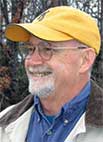
Two important points make Beefmaster the breed of choice for Ray Bohannon. To him, they are easy calvers and they are low-maintenance.
These factors are important to Ray and his wife, Anita, who are employed at the Copeland plant in Lebanon, Mo., and have relatively little time to spend at home on the farm. “For us, with our lifestyle, we can’t have high-maintenance cattle,” he said.
The Bohannons began to raise Beefmasters after purchasing 100 acres a few miles from their home. They originally had intended only to buy the property for an investment. “Originally, we hadn’t even thought about putting any cows on it. It was just another investment,” Ray said. “After walking around (the farm) more and thinking about it, I thought it would be kind of nice to have a few old cows."
After talking to several of his neighbors about what breed of cattle they were running, Ray found that a neighbor raised Beefmasters. He decided to do more research on Beefmasters for himself. “After I got to studying the Beefmasters, they are just very, very easy calvers and very low-maintenance. They’re a real tough breed,” said Ray.
Another reason he chose Beefmaster is they have excellent programs as far as outlets for marketing, Ray added. “You have the United Beefmasters Association, which is in Texas. They have little satellite groups all over the country. I’m a member of two different satellite groups: the Central States Beefmasters and Ozark Heart of America Beefmasters. Each one of those has two sales a year, one in the spring and one in the fall that you can market your animals at.
Ray and Anita have also found the breed shows to be a good place for advice on running their Beefmaster cattle. Ray said, “All those people at the breed shows are just really friendly and helpful. Anything you need to know, if you’ve got a question, one of those guys will just get right back with you. I’m very pleased with the organization.”
The Bohannons started with five cow-calf pairs five years ago and his goal is to run 20 cow-calf pairs. Ray registers all his cattle except steers. “There is some paperwork involved, but I don’t mind doing it,” he said.
Ray explained why there isn't a mandatory color trait to the Beefmasters. "You get a little bit of everything.” He said the color variation is due to the fact that the Beefmaster is half Brahma, a quarter Hereford, and a quarter Shorthorn.
The use of rotational grazing is another practice Ray has come to believe in. “We try to get the most bang for our buck by using rotational grazing,” he explained. “We’re big into that because we have such a small number of acres.” He attended NRCS grazing school and learned that “according to their paperwork, you can gain about 30 percent by doing rotational grazing, as far as head per acre.
“In the five years we’ve had the property, I’ve put in all new fencing. We had to pretty much start from nothing,” Ray said.
Both Ray and Anita are pleased with their decision to run Beefmaster cattle.
“Even though it’s hard work, it’s kind of like play, too,” Anita added. “We enjoy being outside so much.”







